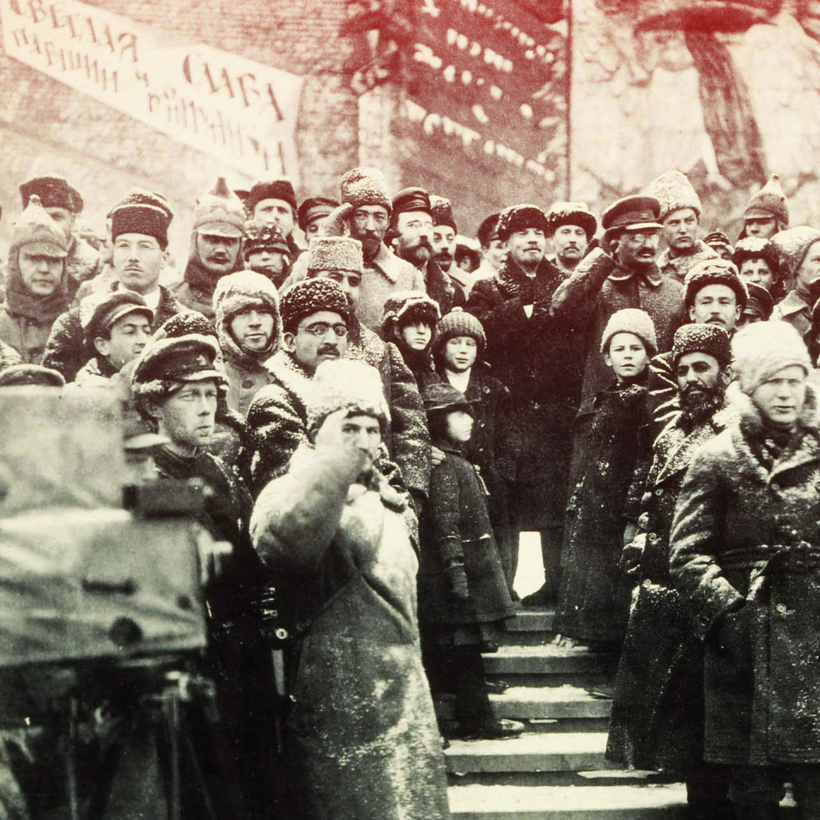In December 1919 a rumor circulated among American troops in Siberia. They were allied to White Russians, part of a multinational force fighting the Bolsheviks. According to the rumor, enemy troops had raided a Red Cross hospital in Irkutsk and tossed patients out of windows, leaving them to die in the snow. “That might well have been an exaggeration,” Antony Beevor warns.
As exaggerations go, it’s pretty tame. The story is told near the end of this book, when readers are already inured to atrocity. If the tale is indeed fabricated, there is plenty worse that is depressingly true. For instance, at one point the author describes how, in Siberia, both sides “strung up the corpses of their victims from the branches of trees”. Wolves would then chew on their feet. Yet he warns: “Far worse horrors were to come.” That could be the title of this book.
Beevor begins Russia: Revolution and Civil War 1917-1921 by speeding through the familiar ground of the revolution. Raised on the logic of divine right, Tsar Nicholas II could never understand the discontent of his people. His arrogance proved fatal when the First World War came. Peasants were treated like cannon fodder, endlessly expendable. After a battle, the dead and the not-quite-dead were hurled into mass graves without ceremony. Occasionally, one of the “dead” would dig his way out. “This happens quite often,” an observer casually noted. Eventually, the peasantry’s tolerance for aristocratic contempt snapped.
In February 1917 Nicholas finally bowed to the inevitable and abdicated. Beevor strips away the misty romanticism that once surrounded the revolution, first peddled by John Reed, the Communist journalist, in his Ten Days that Shook the World. Likewise, Beevor’s reconstruction of the storming of the Winter Palace on November 7, when Kerensky’s Provisional Government was toppled, is a lot more sordid than Sergei Eisenstein’s depiction in his film, October. Beevor describes an “orgy of destruction” in which Bolshevik soldiers made straight for the wine stores, got drunk, ransacked the palace and then raped their female comrades.
On the Warpath
Glorious revolution quickly gave way to horrific civil war. The “belief in universal happiness” that was evident in February was gone by October. In its place came unrelenting terror, perpetrated by both sides. Beevor describes a “kaleidoscope of chaos”, punctuated by cruelty beyond belief.
Beevor finds few heroes. Lenin comes across as a sadist who believed himself infallible and was dismissive of the peasants he claimed to champion. “The closer Lenin came to power, the greater his contempt for any notion of morality or for the rights of others.” Some grudging admiration is tossed toward Trotsky who, thanks to his oratorical skills, “managed to convert mass panic into mass courage”. Under the circumstances, however, convincing men to fight in this war was not particularly admirable.
Beevor blames Lenin for the terror that quickly followed the revolution. He demanded class genocide, “war to the death against the rich and their hangers-on, the bourgeois intellectuals”. He gave his secret police, the Cheka, carte blanche to torture and kill these “lice”, “fleas”, “vermin” and “parasites”. Lenin claimed that the Red Terror was forced upon him by counterrevolutionaries, but Beevor doesn’t buy it. “In civil wars, a policy of terror is almost always the response of those most conscious of the fact that they are in a minority.” Lenin knew that his revolution was unpopular, yet that merely fueled his aggression toward those who rejected his abundant truth.
“The closer Lenin came to power, the greater his contempt for any notion of morality or for the rights of others.”
The chekists were psychopaths already brutalized by war and poverty. The revolution sanctified their brutality. A favorite torture technique was to burn a prisoner’s hands, then slowly peel off the skin. The skilled torturer could strip away a perfect “glove”. Anyone wearing glasses was fair game, since spectacles were bourgeois. When prisoners were transported by train, chekists would pass the time by slowly inserting randomly selected victims headfirst into the locomotive’s boiler. Since mass executions wasted precious ammunition, they took to dumping “traitors” into icy rivers, their limbs weighted with stones.
Women had the most to fear. Cast from their homes and stripped of their wealth, they were forced into prostitution. Girls as young as ten sold themselves on the street. The pretty ones were recruited into the harems of commissars, becoming playthings at cocaine-fueled orgies. Young girls were often sold by their families to reduce the number of mouths to feed.
Atrocity was not one-sided. Ordinary Russians were caught between two groups of sadists, with no way of escape. “The Whites pillage, the Reds pillage”, a peasant lamented. “So who do you think we should support?” A White officer, perhaps exceptional in his humanity, was persuaded to join a looting expedition. Disgusted by what he observed, he concluded that pillaging was never just theft, but something much more sadistic. “The intoxication of absolute power. These terrified people were at your mercy. You could do with them what you wanted.”
Cossacks were the backbone of the counterrevolution. For most of them, the civil war provided opportunity for plunder. Warlords took their private armies wherever loot beckoned. Democratic in their violence, they attacked not just Bolsheviks, but everyone. Again, it was women who suffered most. Kurdish women, aware of the Cossack fondness for rape, smeared their bodies with excrement to deter sexual assault. That didn’t work. An observer noted: “The soldiers wiped them off with rags and raped them.”
A favorite torture technique was to burn a prisoner’s hands, then slowly peel off the skin. The skilled torturer could strip away a perfect “glove.”
This was supposed to be a civil war, but in truth it was a world war fought in Russia, a cacophony of competing aspirations. Japanese, Chinese, French, Czech, British, Canadians and Americans all found justification for intervention. The Bolsheviks drew recruits from the Austrian, Hungarian and German prisoners of war still held in Russia. The British war minister Winston Churchill thought the British could — and should — hold back the tide of Communism in Russia. The prime minister David Lloyd George, however, understood that forcing exhausted British soldiers to fight Bolshevism in Russia would encourage its growth at home. “Russia does not want to be liberated,” he decided.
Beevor skillfully recounts a “fiendishly complex” war fought on Russia’s periphery, in Belarus, the Baltic, Ukraine, Poland, Siberia and Persia. The movement of armies hardly seems important in what was a brawl. The pattern of war would swing wildly as one side, then the other, gained the upper hand, exhausted itself, then retreated. A railway station in Ukraine changed hands 28 times. In the end, the Bolsheviks won because White aspirations were incompatible with 20th-century ideals. However, no one really wins a civil war.
Beevor, best known for his formidable book Stalingrad, commands authority as a historian because his research is comprehensive and his conclusions free of political agenda. He’s a skilled writer, but his prose is not what makes his books special. Rather, it’s the confidence that his authority conveys — one senses that he knows his subject as well as anyone. He allows his mountain of evidence to speak for itself, simply charting the course of this horrible war, exposing its boundless cruelty. This is easily the most horrifying war story I’ve ever read. One wonders how Russia could ever contain so much suffering.
“A civil war is always a cruel thing,” the White general Mikhail Alekseyev once remarked. “Especially so with a nation like ours.” This is an unmerciful book, unceasingly agonizing, yet always irresistible. Horror is delivered in relentless rhythm. Cossacks kill slowly to prolong pain. Marauding Bolsheviks steal food from peasants. Desperate citizens raid a hospital, stealing clothes from typhus victims as they lie dying. Wounded horses are carved for meat. A White Russian officer, fearful of reprisals, shoots his children, then his wife, then himself. Yet, always, far worse horrors will come.

Gerard DeGroot is a professor of modern history at the University of St. Andrews and the author of several books, including The Bomb: A Life and The Seventies Unplugged


